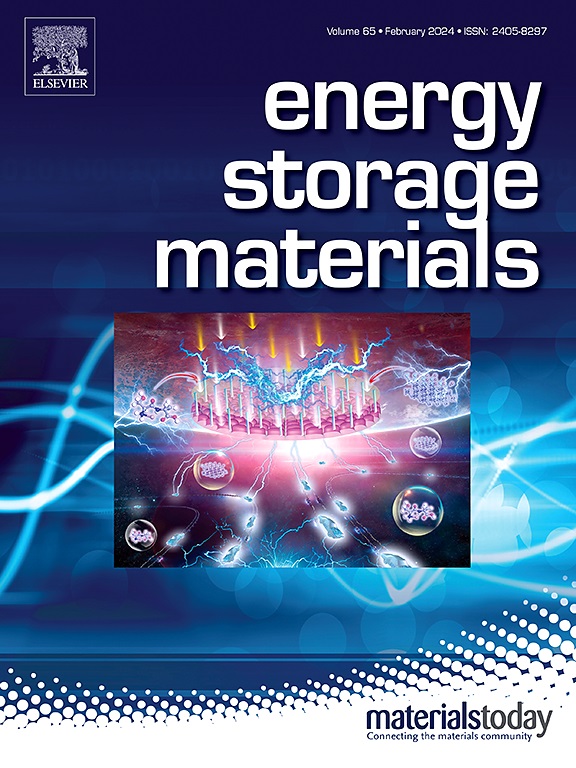A dual-functional DMDAAC electrode enhancer with hydrophobic effect for highly stable Zn powder composite anode
IF 18.9
1区 材料科学
Q1 CHEMISTRY, PHYSICAL
引用次数: 0
Abstract
MXene-modified zinc powder (MXene@Zn-p) anodes have demonstrated the unique effect of inhibiting dendrite growth, thereby enhancing interface stability. However, the insufficient binding force between Ti3C2Tx MXene and Zn powder, endowed with natural hydrophilicity, results in an inevitable failure of MXene@Zn-p anodes during long-term cycles. To address this issue, Dimethyl Diallyl Ammonium Chloride (DMDAAC) is introduced as a dual-functional electrode enhancer to construct a tight hydrophobic interface on the Zn powder composite anode by electrostatic self-assembly while effectively solving the weak adhesion and hydrophilicity of both MXene and Zn powder. The obtained Zn powder composite anode effectively suppresses dendrite growth and corrosion effects, achieving a durable interfacial stability. The DFT and COMSOL simulations further certify that the DMDAAC plays a key role in regulating uniform Zn deposition. As a result, the as-engineered anode achieves a high coulombic efficiency of 99.2% after 300 cycles at 1 mA cm-2. Symmetric cells with the composite Zn powder anode demonstrates stble cycling for 300 h at 1 mA g-1 and 1 mA h g-1, extending lifespan by 233 h compared with MXene@Zn-p anode. The assembled two full cells with Zn powder composite anode also exhibit reamrkably high capacity retention and cycling stability (89.8% after 200 cycles at 5 A·g-1 for MnVO and 82.2% after 1000 cycles at 1 A·g-1 for MnO2). This work provides an efficient strategy for achieving highly stable Zn powder composite anode, thus facilitating the commercialization process of aqueous zinc ion batteries.

求助全文
约1分钟内获得全文
求助全文
来源期刊

Energy Storage Materials
Materials Science-General Materials Science
CiteScore
33.00
自引率
5.90%
发文量
652
审稿时长
27 days
期刊介绍:
Energy Storage Materials is a global interdisciplinary journal dedicated to sharing scientific and technological advancements in materials and devices for advanced energy storage and related energy conversion, such as in metal-O2 batteries. The journal features comprehensive research articles, including full papers and short communications, as well as authoritative feature articles and reviews by leading experts in the field.
Energy Storage Materials covers a wide range of topics, including the synthesis, fabrication, structure, properties, performance, and technological applications of energy storage materials. Additionally, the journal explores strategies, policies, and developments in the field of energy storage materials and devices for sustainable energy.
Published papers are selected based on their scientific and technological significance, their ability to provide valuable new knowledge, and their relevance to the international research community.
 求助内容:
求助内容: 应助结果提醒方式:
应助结果提醒方式:


